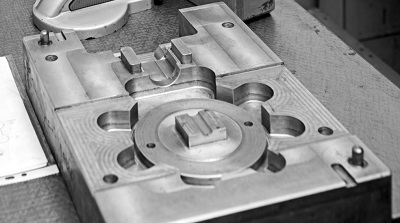Investment Casting Process
1. Die Construction & Building
 |
To pursue of precision investment casting, a metal die/master die is the first step. The size of the master die must be carefully calculated, it must take into consideration expected shrinkage of the wax pattern, the expected shrinkage of the ceramic material invested over the wax pattern, and the expected shrinkage of the metal casting itself. Using CNC machining and wire EDM to build a precision mold.
Get to see our successful gallery, email to our sales team directly for your project info@ego-mfg.com
 |
2. Wax Pattern Production Hot wax is injected into the mold or die and allowed to solidify. Cores may be needed to form any internal features. The resulting wax pattern is an exact replica of the part to be produced. The method is similar to die casting, but with wax used instead of molten metal.
Click here to know more about our design and engineering service.
3. Shell Creation
 |
A gating system(sprue, runner bars, and risers) is attached to the wax mold. For smaller castings, serveral wax patterns are attached to a central wax gating system to form a tree-like assembly. A pouring cup, typically attached to the end of the ruuner bars, serves to lead molten metal into the mold.
The assembled "pattern tree" is dipped into a slurry of fine-grained silica. It is dipped repeatedly, being coated with progressively more refractory slurry with each dip. Once the refractory coating reaches the desired thickness, it is allowed to dry and harden, the dried coating forms a ceramic shell around the patterns and gating system.
The hardened ceramic mold is turned upside down, placed in an oven, and heated until the wax melts and drains away. The result is a hollow ceramic shell.
4. Pouring
 |
The ceramic mold is heated to around 550-1100°C. The heating process further strengths the mold, eliminates any leftover wax or contaminants, and evaporates water from the mold material.
Molten metal is poured into the mold while it is still hot - liquid metal flows into the pouring cup, through the central gating system, and into each mold cavity on the tree. The pre-heated mold allows the metal to flow easily through thin, detaled sections. It also creates a casting with improved dimensional accuracy, as the mold and casting will cool and shrink together.
5. Dry Out
 |
After the mold has been poured, the metal cools and solidifies. The time it takes for a mold to cool into a solid state depends on the material that was cast and the thickness of the casting being made. The hang in the wax tree and dry out.
Contact us or email to our sales team directly for your project info@ego-mfg.com
6. Shake Out
 |
Once the casting solidifies, the ceramic molds break down, and the casting can be removed. The ceramic mold is typically broken up manually or by water jets. Once removed, the individual casting are separated from their gating system tree using manual impact, sawing, cutting, burning, or by cold breaking with liquid nitrogen.
Click here to know more about our tool & die building service.
7. Heat Treatment
 |
This is to improve the mechanical properties of investment castings, we can do heat treatment service including: normalizing, tempering, annealing, hardening and carburizing, etc.
Click to know more about Ego's manufacturing capabilities!
 |
8. Blasting & Secondary Operation
After finish castings and heat treatment if required, blasting surface is a must for castings. We can also offer secondary operations which are CNC machining and surface plating, such as anti-rust oild protection, painting, plating.
Copyright © Ego Manufacturing Group All Rights Reserved | Sitemap |